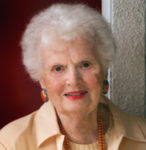
LA JOLLA, California — We have a problem. A silver tsunami is coming our way. It is the baby boomer generation, that high curve on population charts, which has reached retirement age. Not only is our elderly population increasing—the largest growth is people age 85 and older and by 2050 the global population of 65+ year olds will have doubled—but the number of working-age people and fertility rates are shrinking. So, we will have more people needing care and assistance and fewer people available to provide these services.
The issue with chronic isolation is that it is not only emotionally distressing, but it is also physically harmful—increasing the rates of illness, cognitive impairment, shortened life spans, heart attacks, high blood pressure, strokes, and high levels of cortisol, the stress hormone which increases susceptibility to disease. Some people have a greater need to connect than others; the problem is when there is a mismatch between the level of social connection desired and the level the environment provides.
This impacts older people to a greater degree because their social networks tend to shrink and are difficult to replace.
According to UCLA Professor of Psychology Naomi Eisenberg (AARP, “Real Possibilities,” December 2019/January 2020), feelings of loneliness create an inflammatory response in the body. The problem is that inflammation heightens loneliness by increasing sensitivity to negative social experiences and inhibiting the ability to reach out to others. Socially excluded people have been found to have less brain activity in their executive control and less focused attention. Inflammation makes the brain irritable, suspicious, prone to negative emotions, and fearful of meeting new people and making new friends. Our bodies and brains have opposite survival mechanisms: the body wants to approach others to survive, while the lonely brain misreads social signals as a threat. CBT (cognitive behavior therapy) is one road to offset the brain’s high level of alarm by resetting the negative self-talk. There are three dimensions of connection to others.
- Personal,: spouse and intimate friends;
- Relational: family, friends, and colleagues;
- Collective: large groups such as political or social organizations.
Local communities can provide opportunities for volunteer work. Finding ways to help others is always a benefit to one’s own well-being.
The evolutionary purpose of feelings of loneliness was to encourage people to seek the safety of the group and to ward off predators. One of the solutions to loneliness and isolation is to create group homes or networks between homes to allow residents to easily contact each other. Amazon tried to provide an AI (artificial intelligence) to remind people to attend meetings and events in their community as well as facilitate contacting others for a cup of coffee or a walk. I was one of the first to test such a device.
The newest strategies (New York Times, “Would You Let a Robot Take Care of Your Mom?” December 14, 2019) address the use of robots to help seniors by reminding them to take their medicines, exercise, or call a friend. Some elderly people react to robots as a friend with whom they can chat or who will play a song, tell a joke, or read a book aloud.
Loneliness drives people to eat sugars and fats in order to feed the pleasure centers of their brain. Because loneliness lowers self-esteem, lonely people are less likely to take care of themselves.
There is something unnerving about replacing a human touch, a human voice, with a robot, but if there are no humans available, then the next best thing is indeed artificial intelligence that can fill in the gaps. People tend to anthropomorphize their robots and become fond of them like a friend or pet. Since the people least likely to reach out to others are the people who need to do it the most, it is up to those who are witnesses to the plight of the depressed, lonely, or isolated people to do the reaching, and even if rebuked at first, persevere to pull these people out of their conundrum and help them get involved in activities with others. A tall order, but worth pursuing. There is an old Jewish prayer I remember my grandfather saying: “Dear God, don’t let me be sick, poor, and alone.”
© Natasha Josefowitz, PhD, is a member of the Academy of Certified Social Workers (ACSW). This article appeared initially in the La Jolla Village News. You may comment to natasha.josefowitz@sdjewishworld.com